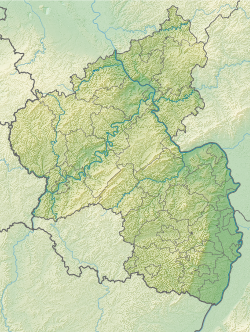| UNESCO World Heritage Site | |
|---|---|
 | |
 Interactive map of Trier Amphitheater | |
| Location | Trier, Rhineland-Palatinate, Germany |
| Part of | Roman Monuments, Cathedral of St Peter and Church of Our Lady in Trier |
| Criteria | Cultural: (i), (iii), (iv), (vi) |
| Reference | 367-001 |
| Inscription | 1986 (10th Session) |
| Coordinates | 49°44′53″N6°38′57″E / 49.748086°N 6.649054°E |

The Trier Amphitheater is a Roman amphitheater in Trier, Germany. It is designated as part of the Roman Monuments, Cathedral of St. Peter and Church of Our Lady in Trier UNESCO World Heritage Site as a testimony to the importance of Trier as a major Roman city north of the Alps. [1]






